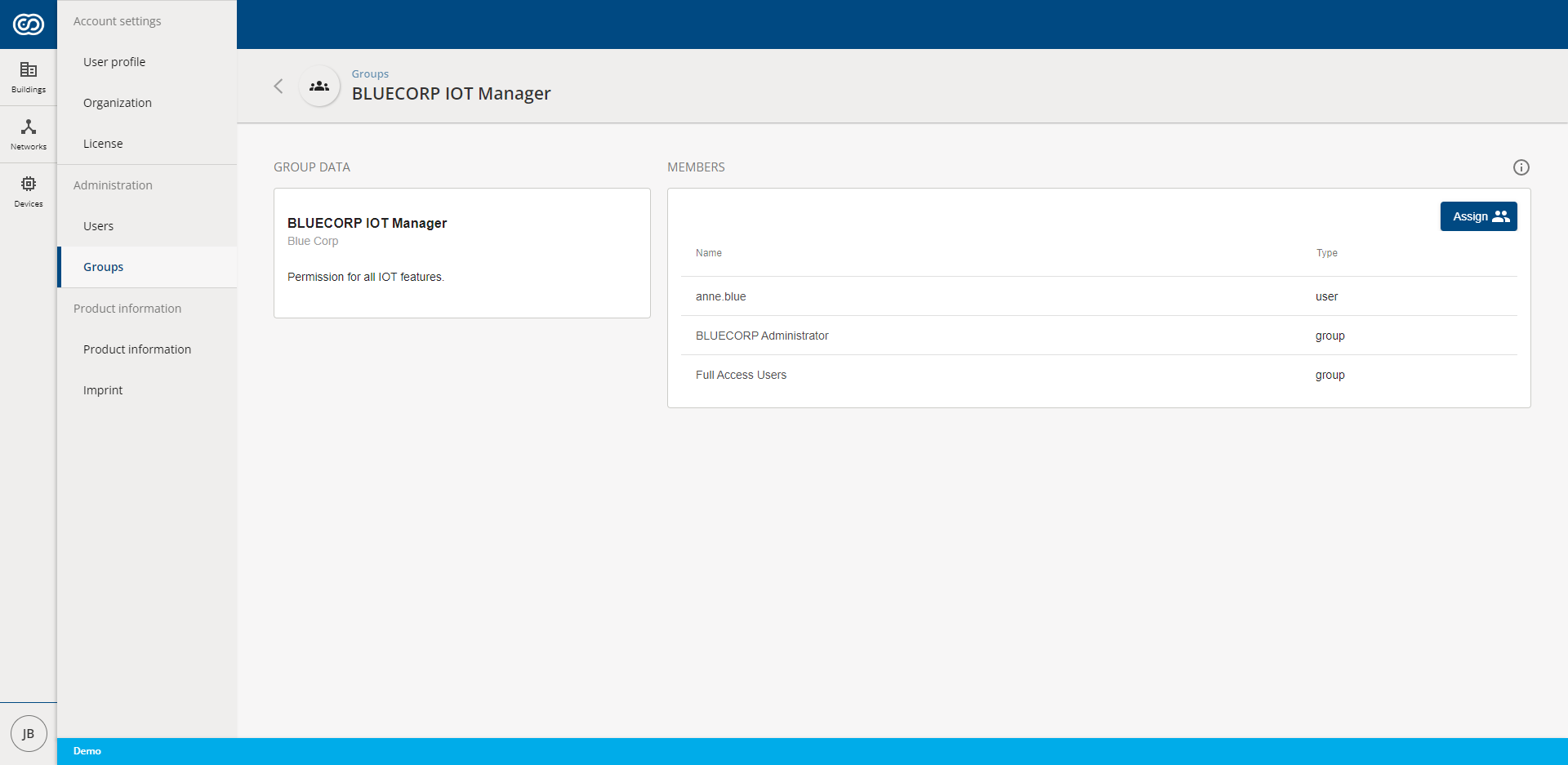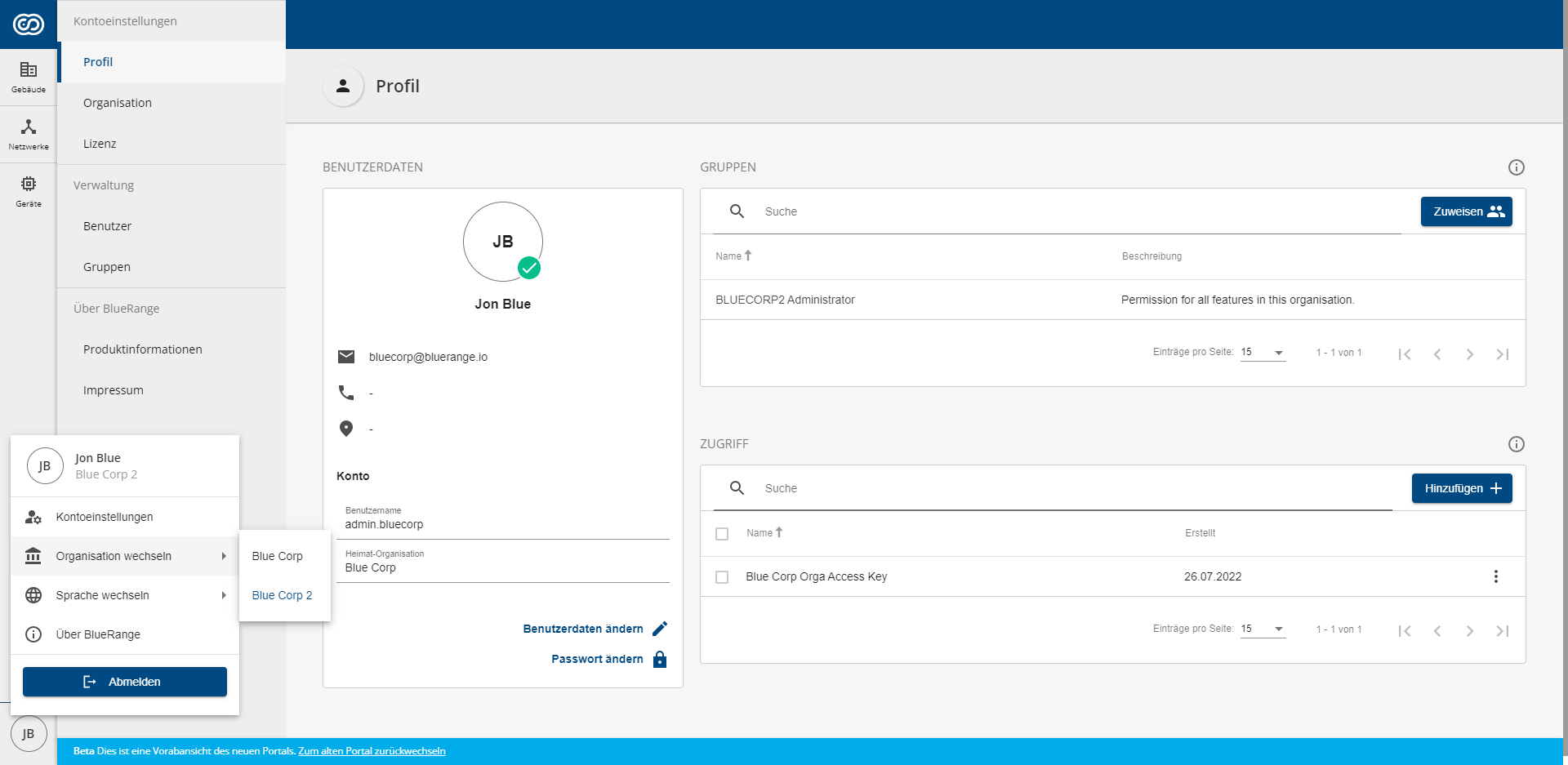Administration
Overview
This chapter covers all administrative tasks such as setting up an organization, creating users and putting them into groups.
All these tasks require to have certain access rights that you own by being part of a group. For a list of applicable roles and groups, check our documentation on Roles and Groups.
You can perform all these tasks by navigating to > "User Icon" > Account Settings and selecting the corresponding item.
![]()
Setting up Organizations (System Admin Role)
You need to be a System Administrator (See Roles and Groups). This is only possible for on-premise installations.
|
If you don’t have an organization set up yet but are in control of the server’s administrator account, you can log in to your platform with these credentials. Once you are logged in, navigate to > Settings > Organization and add a new organization.

The name of the organization is for your reference and can contain any characters you like. You are also required to enter a Unique Name for which requires a name without spaces or special characters. Once completed, the organization will be created and you will also have created a user that has the rights to log in as an organization administrator.

Next, you can log out your system administrator user and log in with the username and password that you just entered for your organization administrator because the system administrator user only allows you to manage users and groups and doesn’t allow you to control other parts of the platform.
Organization Settings (Admin Role)
If you want to know the Unique Organization Name or if you want to change the name of your organization, want to customize the Look & Feel of the platform or change the organization’s Password Policy, you can do this here.

You are also able to edit some organization wide settings such as the default device checking intervals. Our BlueRange Server uses these intervals to mark devices as INACTIVE or COMPLIANT. If they do not report back within the given interval, you will receive notification e-mails.
You can also set up a notification that will be sent once a device becomes inactive. See the Monitoring chapter for more information on how to apply notifications on devices.

Groups & Users
This requires either Administrator or User Manager rights (cf. Roles and Groups).
|
Adding a new User
First, navigate to > "User Icon" > Account Settings > Users to see a list of available users.

Now, press the Add button to create a new user and fill out all the required fields in the shown form.

After pressing the Save button, your user will appear in the list of users but will not be able to do much as you have not yet assigned any permissions. Make sure to continue with the next section.
Add Users to Groups
This requires either Administrator or User Manager rights (cf. Roles and Groups).
|
Navigate to > "User Icon" > Account Settings > Users > "Some User" to see the profile of this user.

You can now use the Assign button in the groups view to choose one or more groups that this user should be part of. Refer to the Roles and Groups chapter for more info.

You can also navigate to > "User Icon" > Account Settings > Groups > "Some Group" to view and edit all users (or groups) that are part of this group.

Add Groups to Organization Groups
BlueRange comes with predefined organization groups. These consist of the basic roles you can see under Roles and Groups. Each of these groups have different rights and possibilities.
Each group that you create has to be part of one of the organization groups to be useful.
The following description shows how to add a group to one of the organization groups.
-
Login to BlueRange as an Administrator
-
Go to
> "User Icon" > Account Settings > Groups -
Select the organization group you want from the list. The name of an organization group starts with the unique name of the organization, e.g. for an organization with the unique name "sales", this would be *SALES Administrator.
-
Press the
Assignbutton and select a number of users an/or groups

You can either assign users to groups or you can decide to nest groups which gives you an easy possibility to inherit permissions and then later on put your users in you custom groups.
Multi Tenancy (System Admin Role)
You need to be a System Administrator (See Roles and Groups). This is only possible for on-premise installations.
|
BlueRange allows a user to be part of more than one organization. To do this, simply assign groups from different organizations to your user. Each group is prefixed with the unique organization name in capital letters. In this example, the user is part of two organizations and has administrative access to both of them.

Once the user logs in, he will see an organization switcher. All pages that he navigates to and all actions he performs will be done in the context of the selected organization.

As you can see, the selected Organization "Blue Corp 2" is also being used as the context to show the user’s profile page, which means that he can only see his group memberships from the viewpoint of the selected organizations.
Each user, however, has a Home Organization in which the user exists. This cannot be changed. This means, that a user will not be visible within the list of all users when viewed by someone without system administrator privileges.
Languages
Users can change the user interface language when clicking on their profile icon in the lower left corner. We currently offer english and german.
Profile & User Settings
Click on your user icon in the lower left corner and choose Account Settings to view your profile.
In the profile overview, you can:
-
Edit your profile
-
Change your password
-
Depending on your permissions, you can also manage API Access keys.
Create an API Access Token
| This requires either Administrator or Appstore Manager or Developer rights (cf. Roles and Groups). |
To create an API access token, navigate to your user profile > "User Icon" > Account Settings and choose to add an Access key.

You should give a descriptive name for the usage of this token so that you can delete it in the future, if it is not used anymore.

Make sure to store your access key in a secure place as you will not be able to view it anymore in the BlueRange platform for security reasons. If you lose the token, you can delete it and create a new token.
Make sure to create a new token for each new use-case, e.g. create a token for an automated tool and another one if you want to manually monitor MQTT message through an MQTT client for debugging. This allows you to individually delete these tokens once they are not used anymore.
Using these tokens is explained in detail in our development guide.